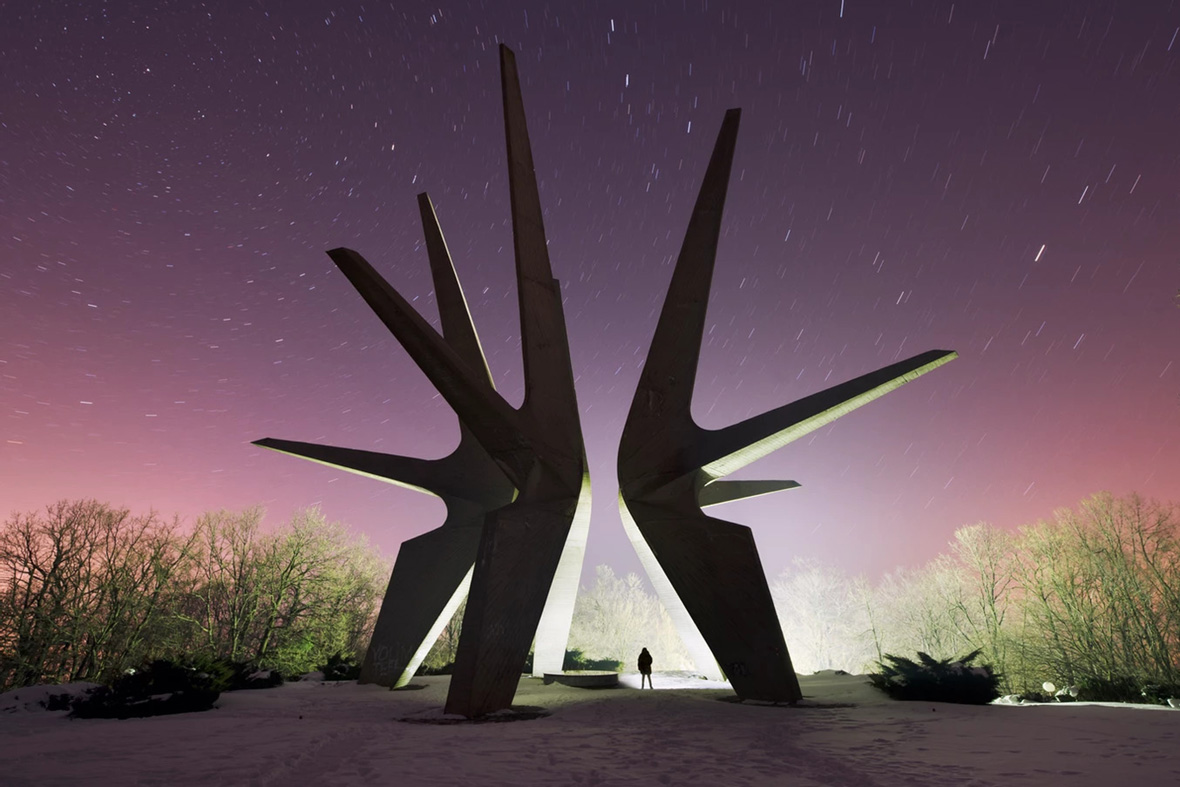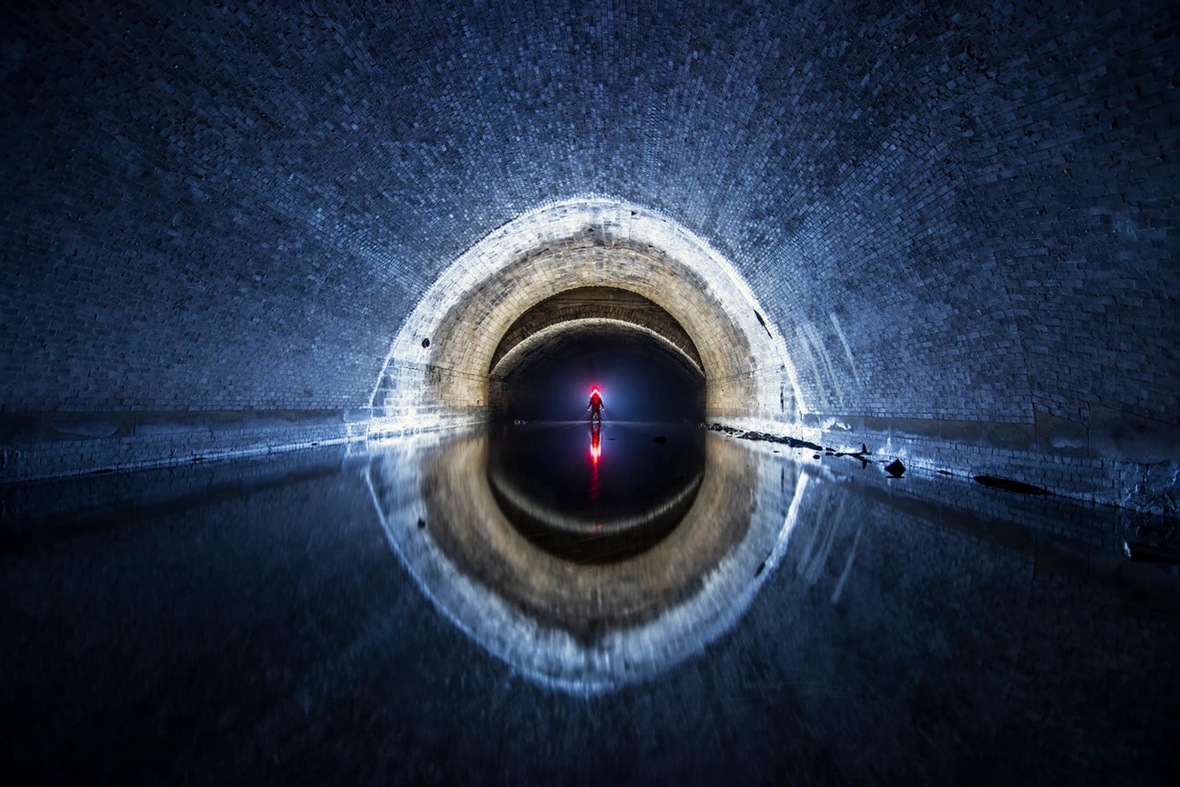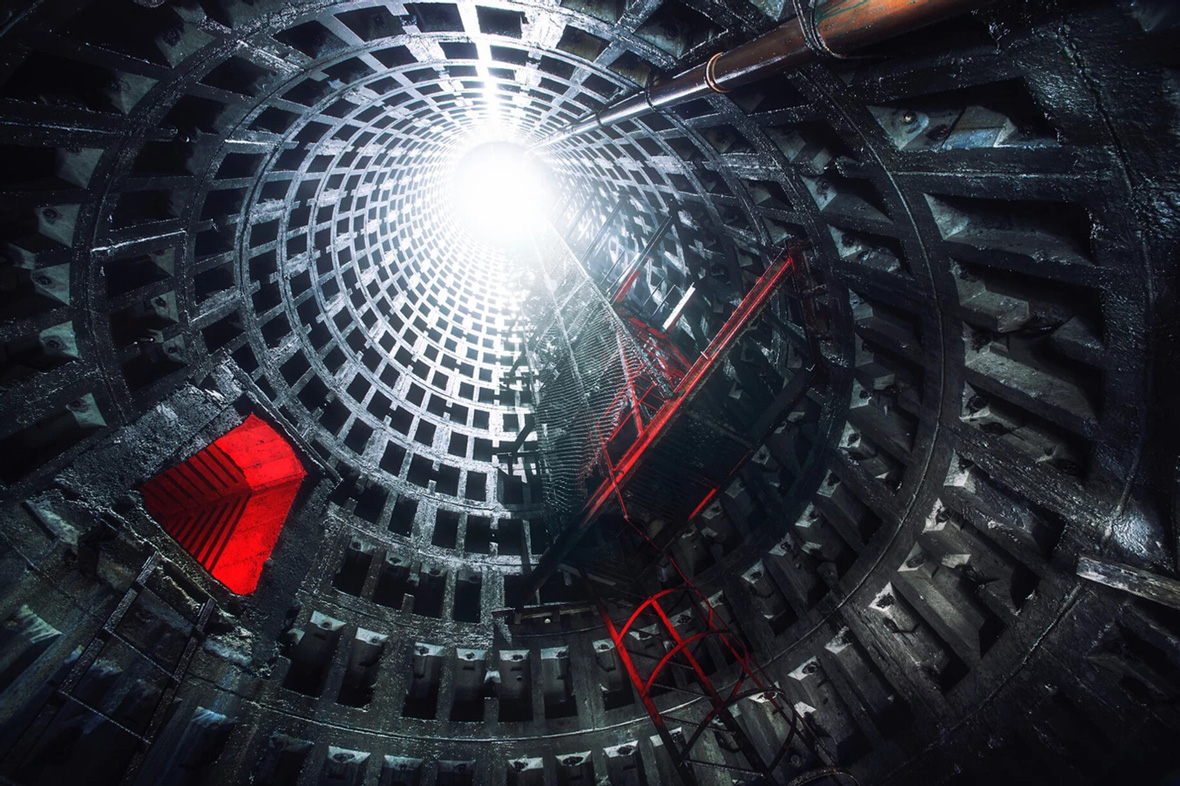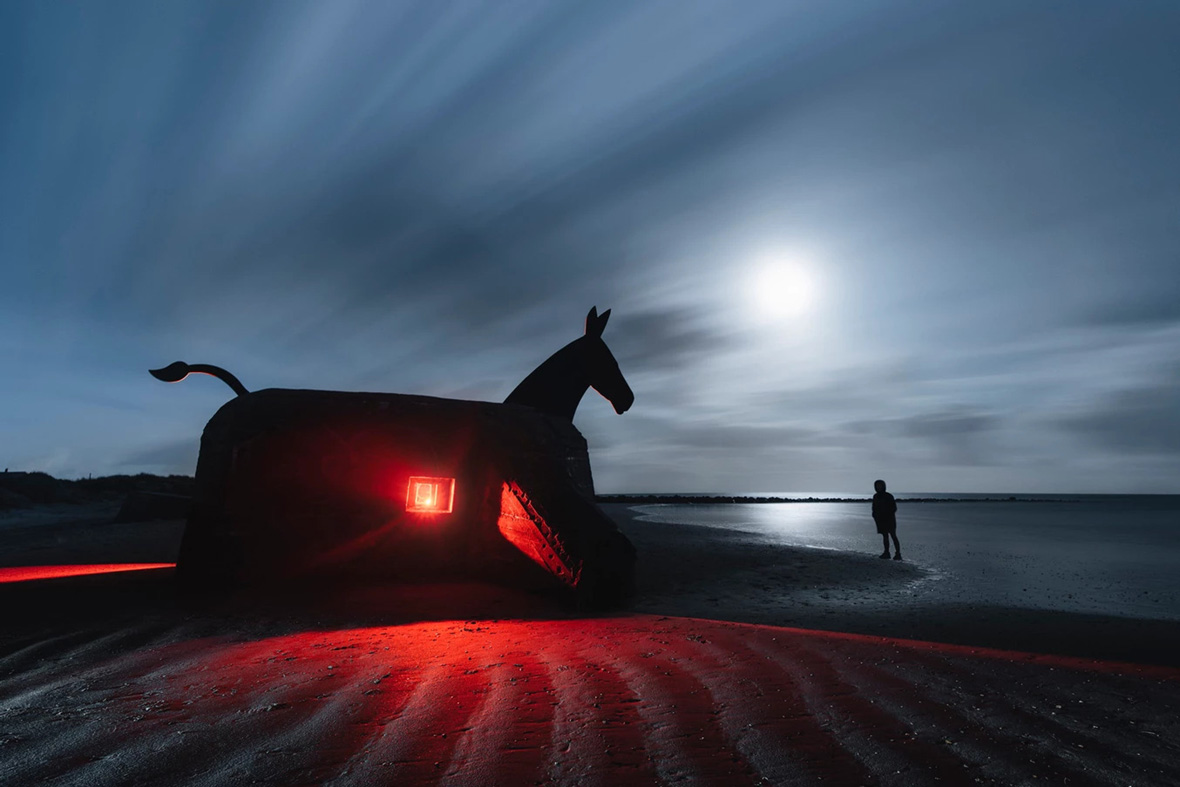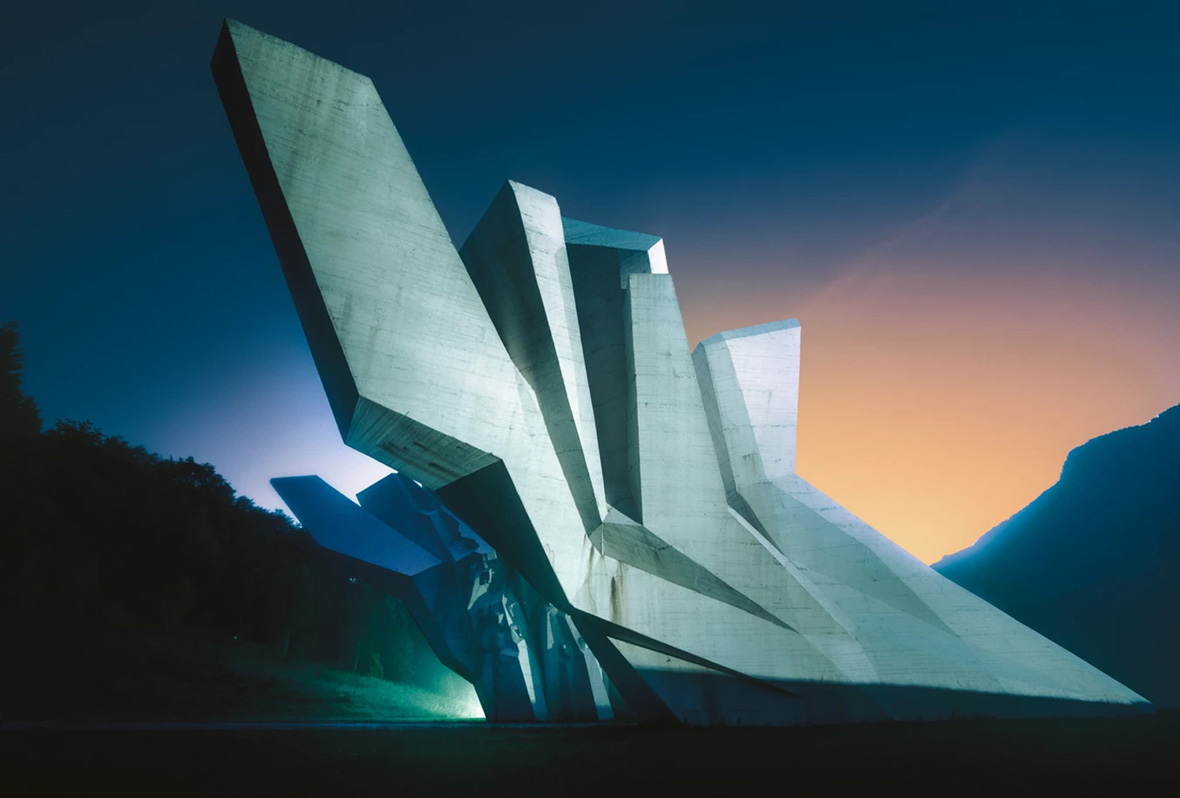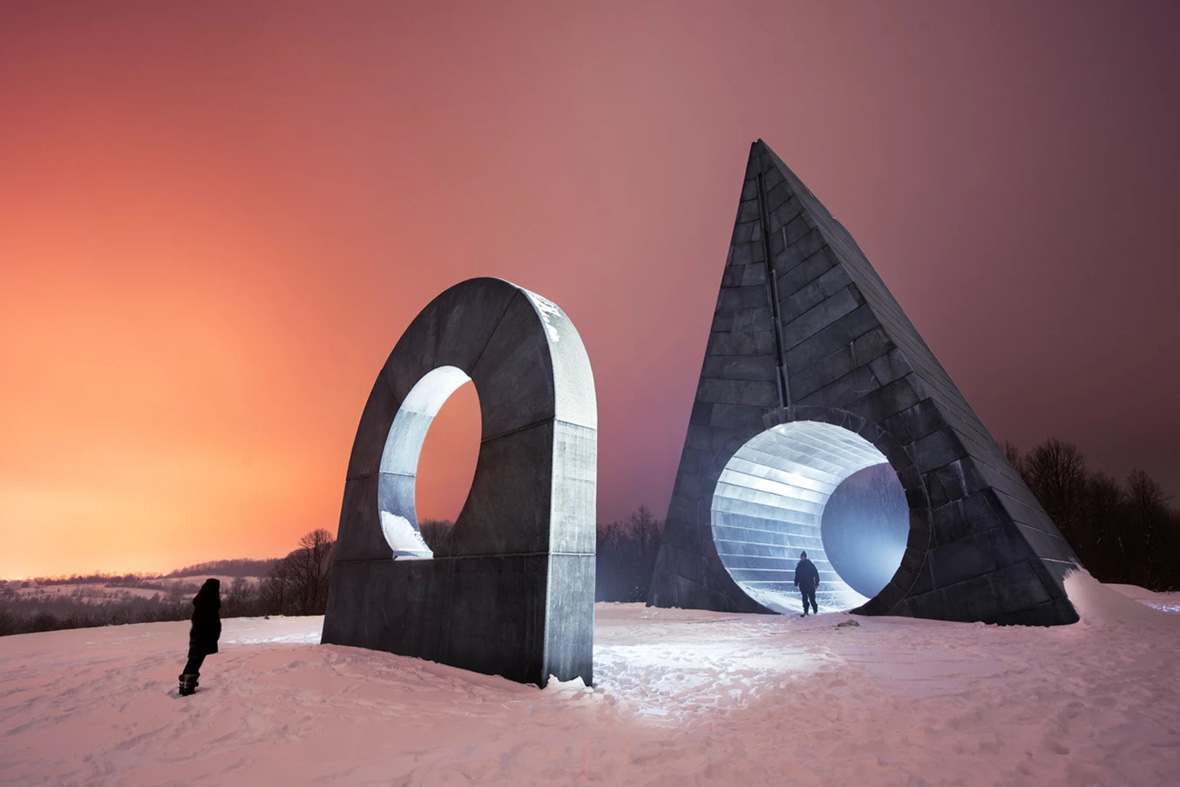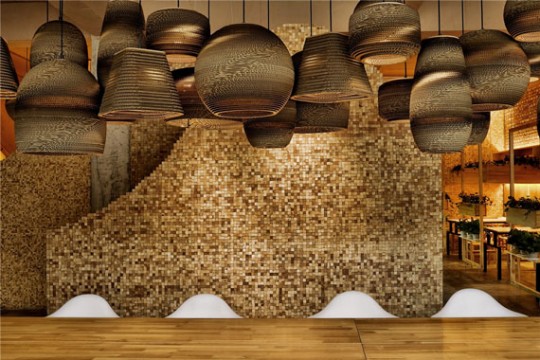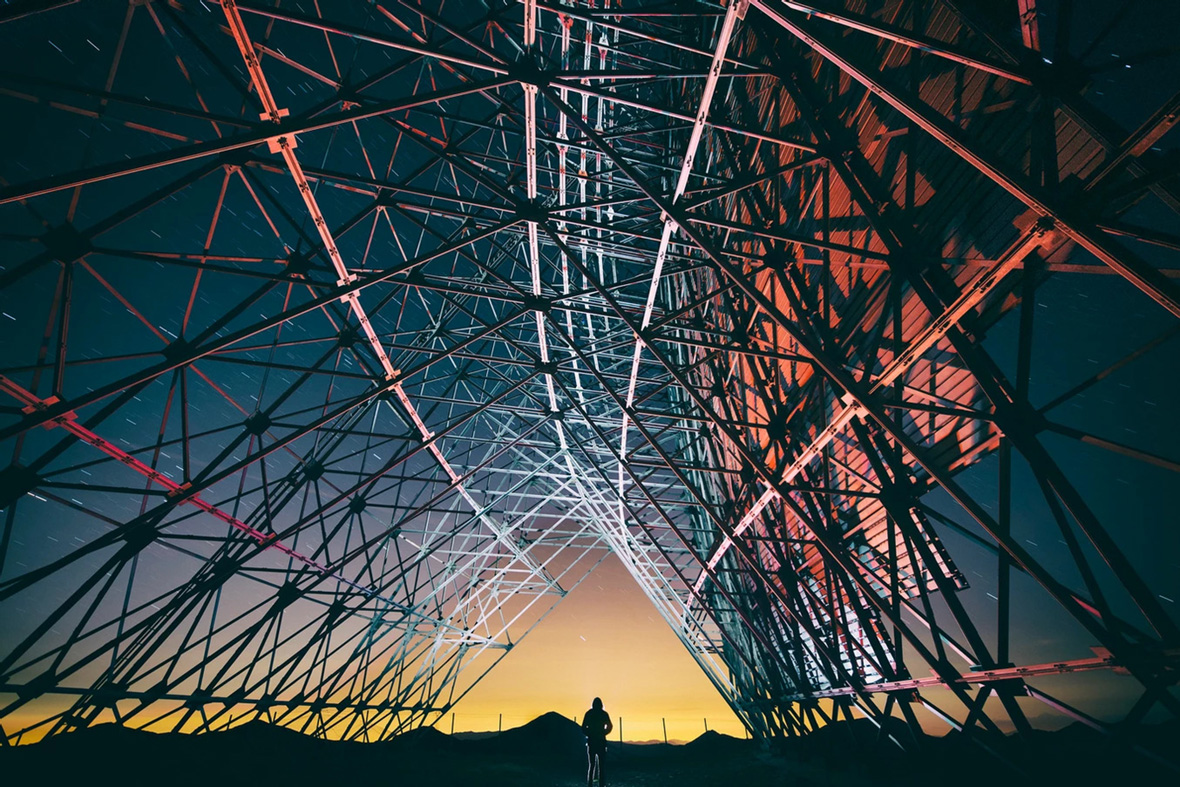
Beneath an intricate entanglement of metal, the lone figure at the bottom of the frame stands meekly in its shadows, barely visible against the looming structure. Further above, stars streak across the night sky, and on the distant horizon, the sun peeks through with the first rays of morning light.
In a separate image, a similarly silhouetted figure stands in front of an alien megalith. A bright, unseen light source radiates from beneath the sculpture. Overhead, the stars appear to be in motion, a stark contrast to the stillness of the field beneath. These aren’t scenes from an upcoming sci-fi blockbuster. They’re shots taken by Chinese photographer Yang Xiao, who depicts real-life locations in an otherworldly light.
繁茂的金属结构下,伫立着孤独的人影。这巨型钢筋组装而成的怪兽,让人物显得格外渺小。向远处望去,繁星划过夜空,地平线上,第一缕晨光依稀可见。
另一幅照片里,人物逆光站在一个形似吊诡的巨型石雕之下,光源从雕塑下方流动。夜空中流转的繁星动感十足,与地面的静止交相衬映。
这些图片并非出自哪部即将上映的科幻大片,而是中国摄影师杨潇所创作的摄影作品,以异世般的奇幻光线呈现现实场景。
Yang has made a name for herself in recent years with Eternal Monuments in the Dark and Nocturnal Adventures, two projects that present forgotten manmade structures and spaces in breathtaking scope. The former series spotlights monuments and memorials from around the world, while the latter focuses on deserted architecture that ranges from underground sewer tunnels to Cold War-era NATO bases. Through long exposures, manipulation of light, and image composites, Yang creates dramatic photos that aren’t easily forgettable.
近年来,杨潇凭借《黑暗中的永恒纪念碑 (Eternal Monuments in the Dark)》和《夜间出动 (Nocturnal Adventures)》两个摄影系列在社交平台上为人熟知。都以充满戏剧性的震撼影像,呈现着一座座超现实主义的建筑空间遗迹。《黑暗中的永恒纪念碑》聚焦于世界各地纪念建筑物,而《夜间出动》则将镜头对准了各类废墟,包括地下下水道以及冷战时期的北约基地,以长曝光、布光和多重曝光等拍摄手法,往往令人过眼难忘。
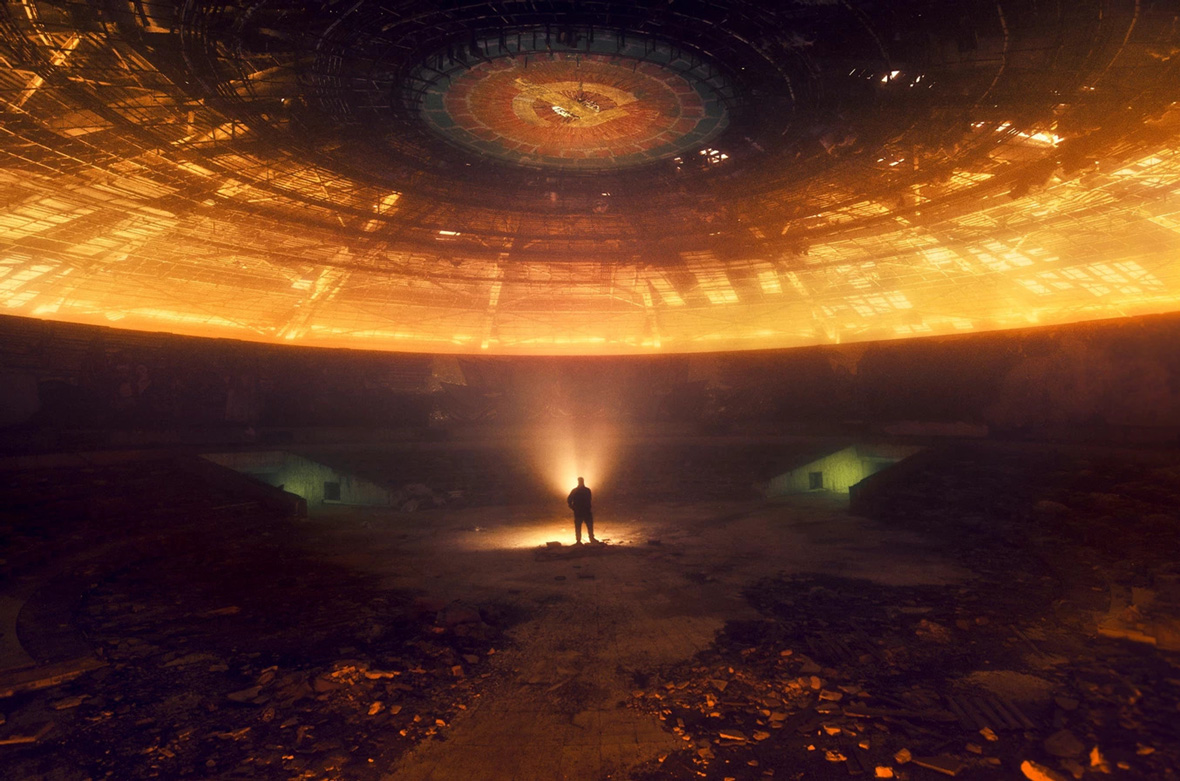
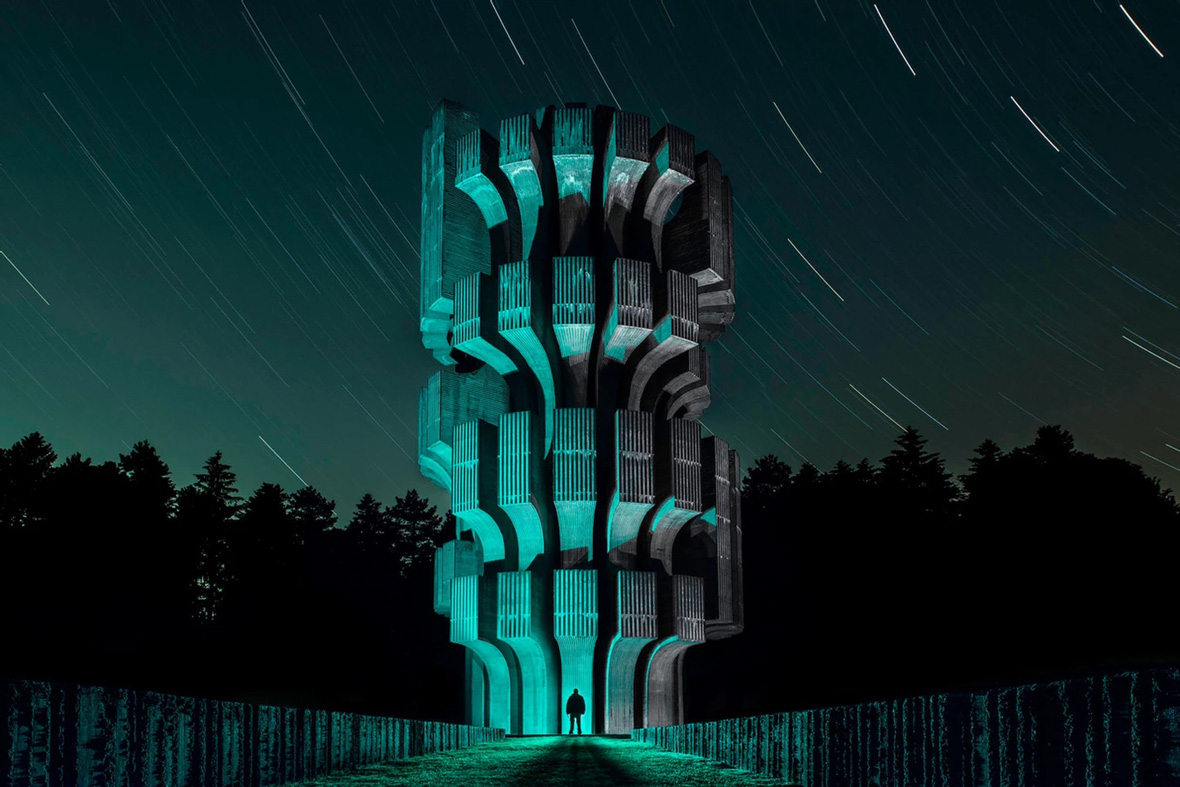
Yang’s photos require a considerable amount of effort to shoot. Many variables amp up the difficulty. For one, she needs to spend time researching each place beforehand and figure out how to get to them. More often than not, they’re far out of the way, and their remote locations make for treacherous journeys, especially considering that most of the trip happens after dark. Whether it be weather or terrain, reaching some of these locations can be unbelievably dangerous.
“One of my most intense experiences was in Italy, at the Allied Command Europe High System,” she recalls. “The place is located on a peak of the Alps—it wasn’t a rational decision to climb this snowy mountain without any clear path at night. At the halfway point, I realized it’s impossible to keep going, but also too dangerous and steep to head back. I was stuck and felt extremely desperate. I ended up slipping 10 meters by accident. Bruises and scratches all over my body are evidence of the insanity of that night. The place was epic, but for sure I won’t risk doing something like this again.”
拍摄这些照片要下相当大的功夫,环境、地理位置等诸多因素增加了拍摄的难度。首先,她需要提前对每一个地点做好勘查,明确抵达的路线。再者,很多拍摄地点都相当偏僻,旅途危险重重,更何况她大部分拍摄都是在夜间。而在前往一些拍摄地点途中,恶劣的天气或地形都会让行程变得加倍危险。
她回忆道:“我最紧张的一次经历是位于意大利的盟军欧陆高级指挥系统(Allied Command Europe High System)。这个地方位于阿尔卑斯山的一个山峰上。本来在晚上看不清路况的情况下爬这座雪山就是不太明智的决定。走到一半,我才开始觉得没办法再继续前行,但回头路又太险了。被困在中间,我非常绝望,后来还不小心滑 10 米远。当时我全身都是淤青和伤痕,真的不要太疯狂。虽然拍摄地的确令人震撼,但也时刻充斥着风险。”

Even though it’s a challenge getting to a location, it often doesn’t get any easier once she arrives.
A prime example of this would be her trip to an abandoned Yugoslav airbase situated on the border of Croatia and Bosnia. The runway and complex were mostly destroyed by explosives in 1992, and aside from the threat of the unstable underground tunnels and air quality, other hazards kept her on high alert throughout the shoot. “Since it was so close to the border, we encountered border police on our visits; they reminded us to be very careful given the extensive number of mines still in the vicinity,” Yang says. “They also told us that a bear and her cub went inside the tunnels, and they probably haven’t come out yet.”
不仅是前往目的地的旅途困难重重,到达后也不轻松。
譬如她那一次前往克罗地亚和波斯尼亚边界一个被遗弃的前南斯拉夫空军基地,那里的飞机跑道和建筑大部分早在 1992 年的一次爆炸中就毁于一旦。除了摇摇欲坠的地下隧道和糟糕的空气质量,还有着各种危险暗藏其中,令整个拍摄始终要保持高度警惕。“那里离边境很近,所以我们去的时候遇到了边防警察,他们提醒我们要特别小心,因为这里过去埋有大量地雷。当地的警察透露称,曾经看到一只母熊和她的幼崽进入隧道,但再也还没能出来。”她说道。
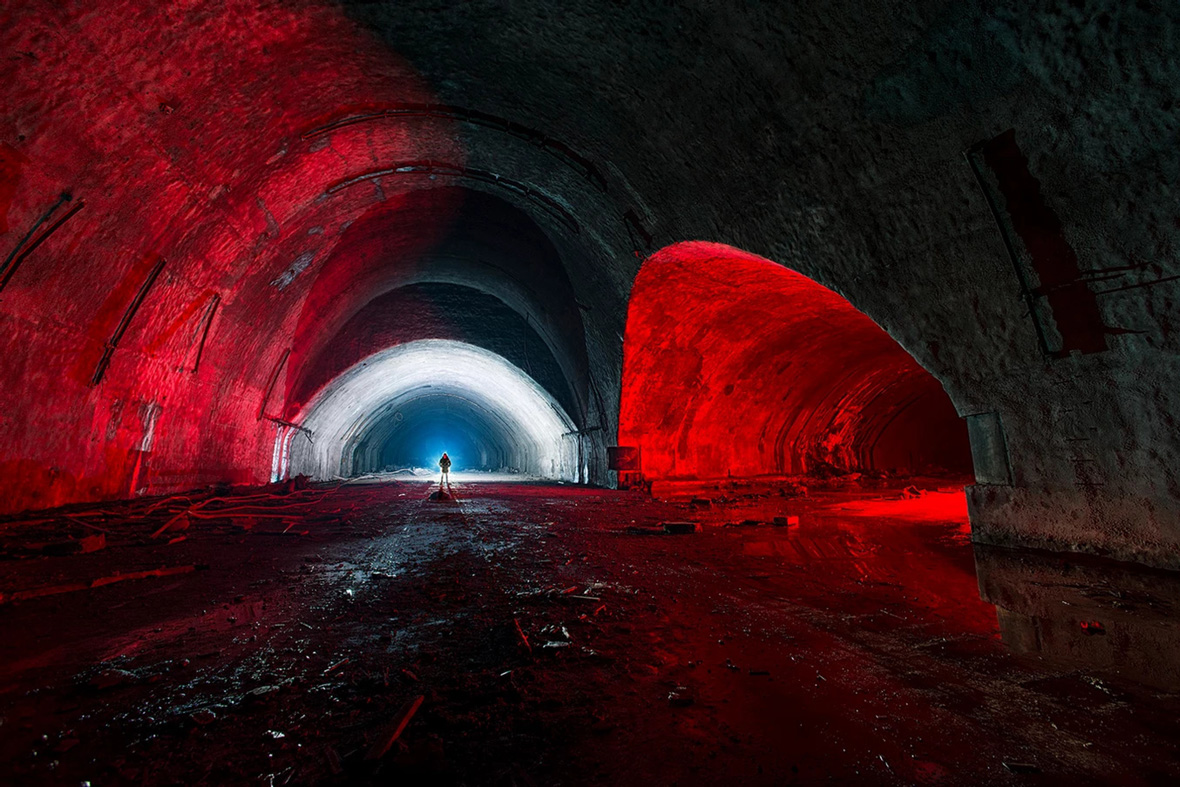
Patience and an eye for detail are essential when creating one of her images. After she arrives at a location, she’ll set up her tripod and begin planning how to light the scene. For every shoot, she brings torch flashlights, multicolored LED light tubes, and even laser pens—which are used in creative ways to illuminate the environment. Sometimes, a single exposure may take 20 minutes or more, depending on the conditions. To get the shot just as she envisions it, it sometimes can take up to five hours or more. “I usually research locations before I go, such as the light conditions of the surrounding environment to get a rough idea of how to shoot it,” she says. “But more often than not, I need to adapt once I’m actually there. It’s tough to access these locations, so I want to make sure everything in my shot is perfect once I’m there.”
在拍摄时,杨潇要有极大的耐心,对任何细节都不能马虎。到达拍摄地点后,她首先会架好三脚架,然后开始构思布光。每次拍摄,她都会带上手电筒、彩色 LED 灯管,甚至还有激光笔,以营造创意的布光效果。有时,单次曝光时间可能长达 20 分钟以上,具体取决于现场的环境。为了拍摄出自己所构想的画面,整个拍摄时长在五小时以上。她说:“通常我出发前都会提前做功课,比如周围环境的光照条件、空气能见度等等。但更多时候,我需要到达现场后再进行调整,因为现实的环境可能更复杂,或不那么理想。本来这些地方就难以到达,所以我想尽可能确保拍摄的照片中每一个细节都不留下遗憾。”

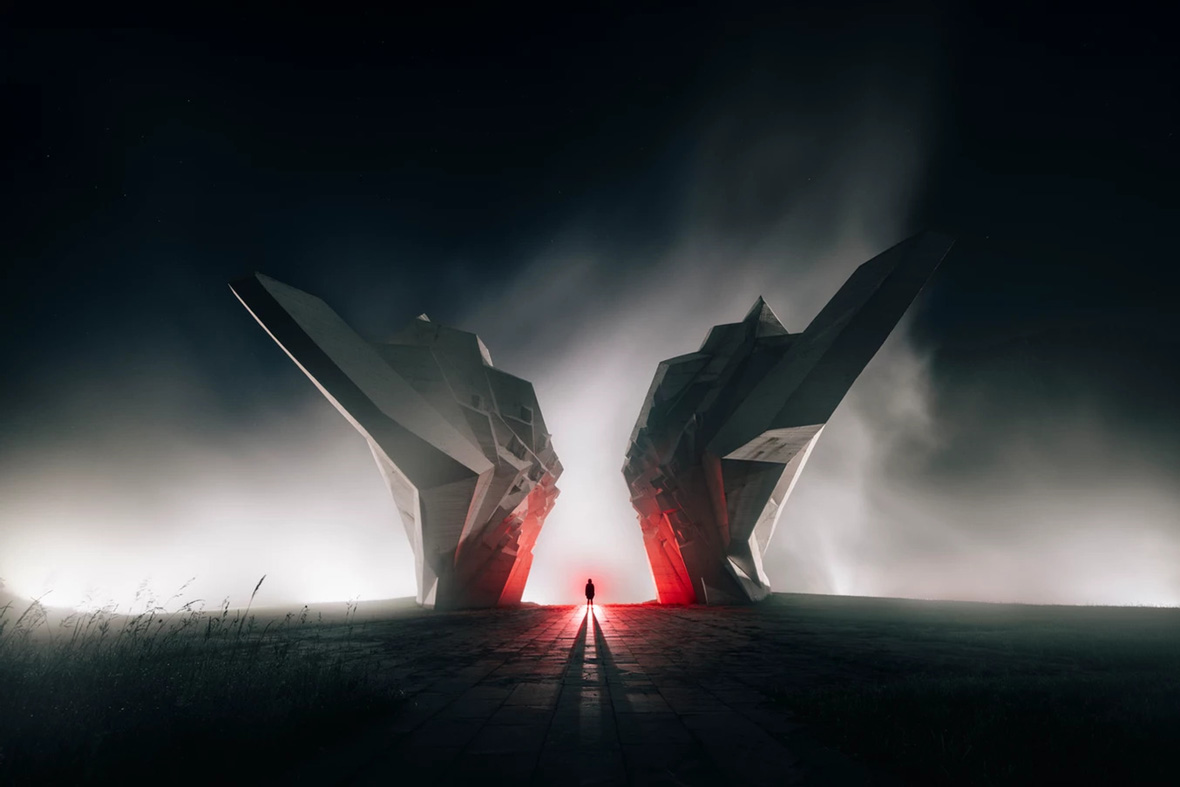
Since 2012, Yang has amassed an incredible collection of images that showcase over 40 countries, taking viewers to off-the-beaten-path spots that even locals aren’t privy to. The places and monuments she chooses to photograph are often less-than-glamorous to the untrained eye—old, dilapidated, and rundown in person, but through her images, she proves there’s still plenty of grandeur to be found in these structures and spaces. By putting a futuristic flair on these constructs of the past, Yang looks to show people the beauty that can be found in the present when you keep your eyes and minds open.
从 2012 年到现在,杨潇已去过 40 多个国家,拍摄下大量震撼视觉的照片。这些地方甚至连很多当地人都鲜为人知。她所选择拍摄的地点和纪念碑往往古老、破败或荒凉,在外人看来可能不那么光鲜亮丽,但透过她的照片,人们仍然能感受到其中的宏伟气势。而杨潇的作品又为这些古老建筑增添了一抹未来主义,向人们证明,只要你愿意留心观察,也能发现它们时至今日或是超越时空的魅力。
Like our stories? Follow us on Facebook and Instagram.
Website: www.inhiu.com
Instagram: @inhiu
Contributor: David Yen
Chinese Translation: Olivia Li

